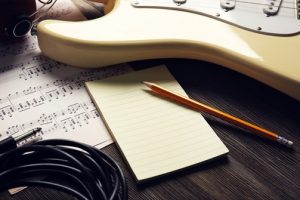Okay, so you have your list of things that you are going to practice but aren’t sure what order to practice things in. One of the keys to having a productive practice is to have everything already set up ahead of time. Having your practice set up ahead of time makes it easier to move from item to item with little downtime.
Of course the most obvious answer would be to practice the thing(s) that are hardest first. What do you do if you have a bunch of things to practice and they all seem hard? What this article is going to cover is how to rank your practice items based on the amount of time you have. I am going to use examples of 15 minutes total practice time and 60 minutes total practice time. You do not have to use these times, they are only examples. The main idea is to show you how you can handle practicing when you have a lot of time and when you don’t have a lot of time.
When you only have a short amount of time to practice (Ex: 15 minutes)
The first thing to keep in mind, regardless of the amount of practice time is that you aren’t going for mastery. You are going for progress, no matter how small it may be at first.
Warm up –
Since you don’t have a lot of time available to practice, you don’t want to spend a lot of time warming up. Pick something that you can do for 30 – 60 seconds to get your hands moving. Don’t worry too much about it, you aren’t going to be practicing anything that is too intense. You still want to make sure to do something to warm up though. If you are practicing something that doesn’t require you to play the guitar at all for your practice session, you can skip the warm up.
Main practice item –
After you have warmed up you want to practice something that is going to benefit you in many areas. If you want work on memorizing your chords, practice forming the chords using only your fret hand. You practice this by hovering your fret hand over the chord, pressing down with all fingers at the same time. You could also practice switching from chord to chord doing this same thing. The benefit to this is that you are training your fret hand to move quickly and efficiently to each chord you play.
If you are able to focus on this for your entire practice session, then do so. If you have trouble doing this you can make shorter blocks of time and go about it that way.
You could also practice two items at once if you are ready for that. To keep with the chord example, you can add strumming the chord in a specific rhythm. This is great to practice even if you aren’t yet able to switch chords with ease. Keep a steady strumming pattern. Do not wait until you are ready to play the next chord. This is a great way to train your fret hand to move from chord to chord.
When you have a longer amount of time to practice (Ex: 60 minutes)
The first thing to keep in mind here, like in the first example, is that the focus should be on progress. Do not focus on perfection or mastery at this point. As long as you make progress, this is a good practice session.
Warm up –
Since you are going to be playing for a longer period of time, you are going to want to make sure that you warmed up. Usually 10 – 15 minutes is a fine amount of time to warm up. Remember to keep the speeds slow as you warm up, playing too fast too soon can cause injury. When warming up you also want to make sure to do something that keeps your brain engaged the whole time. Playing mindless warm up exercises doesn’t help you.
At this point you can have many practice items and make blocks of time to practice each one. Put your most difficult item(s) first. It doesn’t matter in this case which order you put them in. If you find that you struggle in a lot of areas, you don’t have to have them all in the same practice session. More on that later.
Now you have your practice items and the amount of time that you are going to spend on each one. Use a timer to help move you from item to item. When you finish, you finish, move on to the next item. Do this for each item until you are done. If you have set the time to allow you to go through the items a second or even third time.
How to rank your practice items

As shown in both examples you want to make sure to put things that you consider to be the hardest first. The reason is that the longer your practice session goes, the less likely you are to practice the items that are hard. There is also a feeling of ‘treating yourself” when you go from something that is hard to something that is easier. Notice I said easier. Don’t spend any of your practice time playing things that are easy. Once something becomes easy, find a new approach for it that is challenging for you. This is how you start the process of mastery.
You may find that there are a lot of items you struggle with. Keep in mind that you do not have to practice them all in a single session. There are some people that will be able to handle doing this but don’t worry if you are not one of those people. When you are making your practice list for the week, simple put one or two of those more difficult items in each day. Rotating your practice items is a great way to make your practice sessions feel fresh.
You also want to make sure that when you are practicing, your brain is completely engaged all the time. If you are not 100% focused on what you are practicing, it will be very easy to become distracted. You will start playing things that aren’t related to what you are trying to accomplish at that time. You will start playing instead of practicing.
About the Author: Byron Marks is a guitar teacher who teaches beginning guitar lessons in Manchester, New Hampshire




